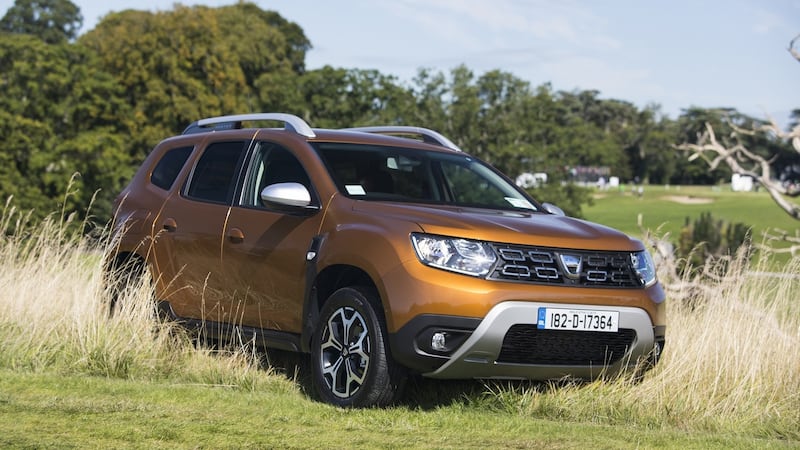Dacia’s success to date on the Irish market has been largely down to its no-frills pricing. Launching here in the maelstrom of the recession, the budget brand captured the mood of austerity. Price was key.
Budget brands have always had their place on the market, from the early short spurt of Lada in the 1980s, to the early iterations of Skoda, Hyundai and Kia. Even Volkswagen traces its roots back to the populist portrayal as the people's car.
And there is a well-worn trek for these brands to follow when conquering a west European market. First you enter with an enticing price and a basic no-frills proposition. Then, gradually, you add a few more bells and whistles, a little bit more sophistication in the styling, slowly and steadily pushing up the price, moving from budget to mainstream and from the butt of lazy jokes to respect as an honest valued brand.

The strange thing with Dacia is that by landing here in the midst of the worst recession in a generation, it didn't end up as the butt of many jokes. Originating in Romania – but since 1999 has been owned and operated by French car giant Renault – its Cold War roots should have seen it hit as hard as fellow Eastern Bloc brand Skoda when it landed here.
Mercilessly mocked
And it would have been mercilessly mocked in the image-obsessed Celtic Tiger years. Yet having a Dacia in the driveway during the recession suggested you were sensible with your spending and that's why you could afford a new car at the time when others were drowning in debt.
The issue now for Dacia is that, as the constraints of austerity are loosened in many households, its offering can no longer be rewarded for merely being so sensible or austere.

With that in mind we welcomed the new Duster to our driveway. The first thing to note is the subtle design touches. There’s nothing radically different in its looks, aside from a more modern refresh in a few of its lines.
The beauty of the new Duster is the price. Starting at €17,390, it’s hard to argue with it as a rival for many family cars. Step up a grade to Comfort and you get alloys, a touchscreen infotainment system and a reversing camera – all for under €20,000. This is probably the best buy of the bunch, for the new grade, Prestige (which was our test car), only adds a few features like 17-inch alloys, climate control and keyless entry, for €26,270. Those added features are not worth a further €6,000 spend.
Old-school Renault
So what do you get for your money? Well, the 1.6-litre engine is a tried and tested diesel unit from the Renault family. It is certainly not fast, but its flaws and peccadilloes have largely been ironed out at this stage of its life. Likewise in the cabin, much of the switchgear is old-school Renault. It’s functional, smart, if a little basic. It’s a world of plastic in here, much of it hard, but the touchscreen system is logical, simple and surprisingly fast to process instructions. In terms of space the Duster is offering decent family hatchback room, although the legroom in the back seems a little tight for adults. A 445-litre boot is impressive.
On the road the most noticeable change to the Duster is the relative silence. It’s much better sound-proofed than before. The five-speed manual transmission on the front-wheel drive variants is relatively smooth, while the suspension set-up doesn’t really cause any issue as this is never pitching itself as a dynamic drive. Electric power steering will be appreciated by buyers.
The Duster doesn’t set the world alight, but it doesn’t have to: it’s tried and tested technology that hopes to have ironed out all the potential foibles and weaknesses before it begins its second coming in a Dacia.
Anecdotal evidence suggests residual values aren’t very strong, and some of the plastic switchgear would be the main concern in terms of its ability to survive the rigours of daily family life. However, colleagues who have made the move to Dacia don’t report any complaints.
The last model was a little rough and ready, but this second generation is a little more refined, without losing its cost-conscious roots.
Lowdown: Dacia Duster 115bhp Diesel Prestige
Engine: 1.598cc four-cylinder diesel putting out 115bhp and 156Nm of torque, matched to a five-speed manual transmission.
0-100km/h: 11.9 seconds
L/100km: 6.5
Emissions (motor tax): 149 g/km
Price: From €17,390 (€26,290)
Our rating: 4/5
Verdict: Basic motoring fare but hard to argue with at such a competitive price











